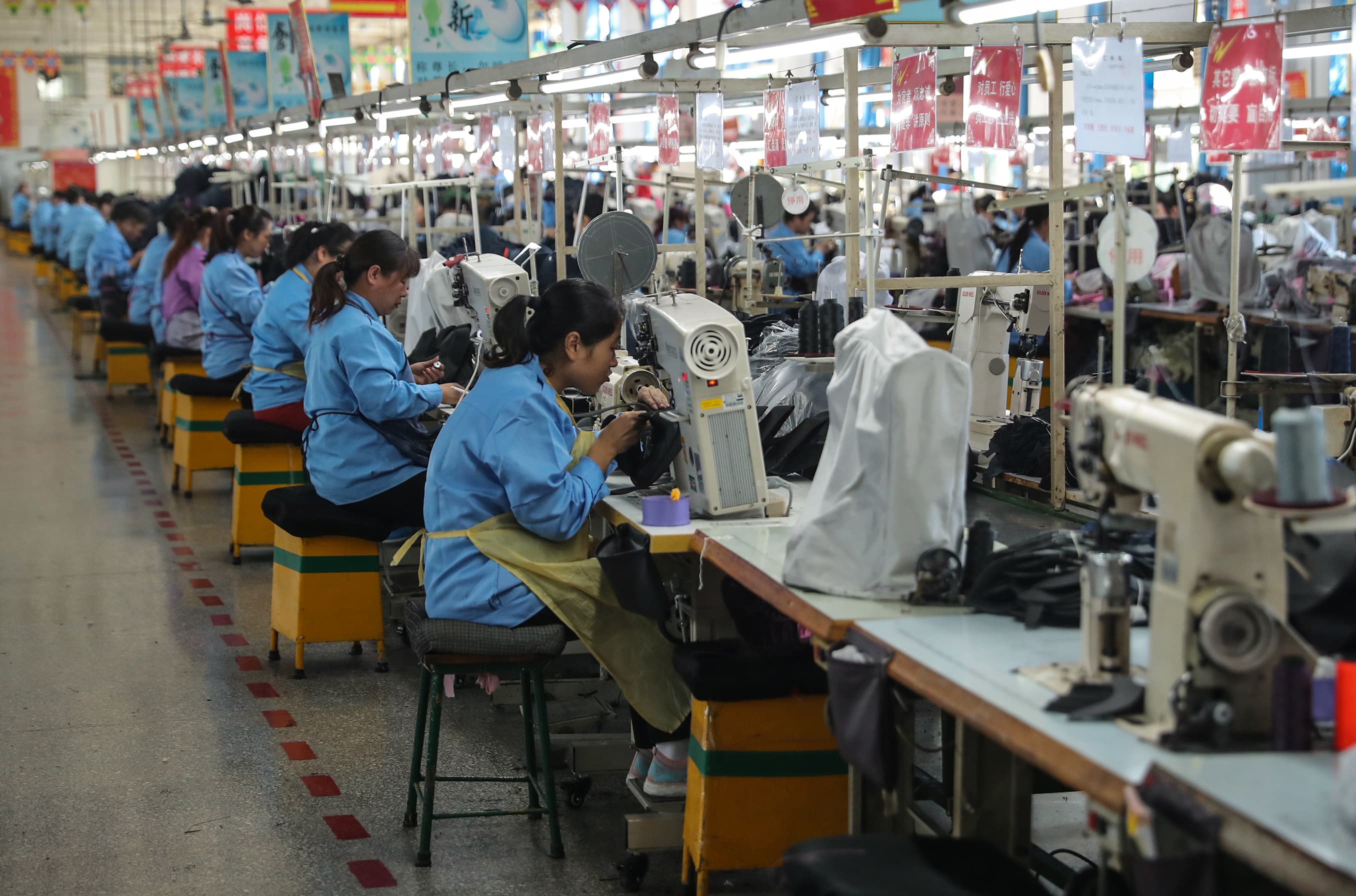
Workers sewing shoes at a factory in Qingdao in China's eastern Shandong province.
AFP | Getty Images
Two widely watched indicators on China's manufacturing activity came in above expectations on Monday.
A private survey of China's manufacturing activity, the Caixin/Markit factory Purchasing Managers' Index (PMI), was 51.4 for September — the highest reading since February 2018. The latest data was much higher than the 50.2 that analysts polled by Reuters had expected and the 50.4 recorded in August.
PMI readings above 50 indicate expansion, while those below that level signal contraction.
The improvement in the Caixin/Markit survey was driven largely by firmer domestic demand as foreign sales have continued to be dampened by the ongoing U.S.-China trade dispute, Caixin and IHS Markit said in a joint release.
"The trade conflicts between China and the U.S. had a notable impact on exports, production costs and confidence of enterprises," said Zhengsheng Zhong, director of macroeconomic analysis at Caixin subsidiary CEBM Group.
"Central policymakers have recently been emphasizing the strong growth in the domestic market. Faster construction of infrastructure projects, better implementation of upgrading the industrial sector, and tax and fee cuts are likely to offset the influence of the subdued overseas demand and soften the downward pressure on China's economic growth," added Zhong.
The release of the private PMI survey followed the announcement of China's official manufacturing PMI. The official data came in at 49.8 in September — the fifth straight month of contraction but slightly exceeding the 49.5 that analysts polled by Reuters had expected. The indicator was also 49.5 in August.
The official PMI survey typically polls a large proportion of big businesses and state-owned enterprises. The Caixin indicator features a bigger mix of small- and medium-sized firms.
The PMI is a survey of how businesses view the operating environment. Such data offer a first glimpse into what's happening in an economy, as they are usually among the first major economic indicators released each month.
PMI data on China is closely watched by global investors for signs of trouble amid a domestic economic slowdown and the ongoing U.S.-China trade dispute.
China's outlook still challenging
Despite the two PMI readings exceeding expectations, analysts said China's economic outlook remains subdued given a weak external environment. The Caixin/IHS Markit survey also showed that manufacturers were still cautious about their business prospects.
"This is unlikely to mark the start of a turnaround," economists at consultancy Capital Economics wrote in a Monday note after the data releases.
"Not only is global demand set to weaken further, but the long-overdue pull-back in property construction is getting under way," they added.
Cedric Chehab, global head of country risk at Fitch Solutions, told CNBC's "Street Signs Asia" that the latest official PMI reading "continues to show that the Chinese economy is going through both a structural and a cyclical slowdown, particularly in the manufacturing sector which is being hit by various headwinds."
Challenges faced by the country's manufacturers include a tightening of financing conditions domestically and the U.S.-China trade war, he added.
Reaed More
Post a Comment